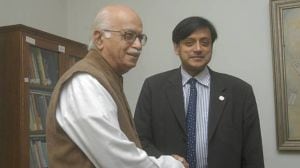A game with no losers
JANUARY 30: On the day James Watson and Francis Crick discovered the structure of DNA, Crick, as Watson later recalled it, walked into the...

JANUARY 30: On the day James Watson and Francis Crick discovered the structure of DNA, Crick, as Watson later recalled it, walked into their regular lunch place and announced that they had "found the secret of life." With all due respect for DNA, I would like to nominate another candidate for the secret of life. Unlike Francis Crick, I can’t claim to have discovered the secret I’m touting. It was discovered or, if you prefer, invented about half a century ago by the founders of game theory, John von Neumann and Oskar Morgenstern.
They made a basic distinction between "zero-sum" games and "non-zero-sum" games. In zero-sum games, the fortunes of the players are inversely related. In tennis, in chess, in boxing, one contestant’s gain is the other’s loss.
In non-zero-sum games, one player’s gain needn’t be bad news for the other(s). Indeed, in highly non-zero-sum games the players’ interests overlap entirely. In 1970, when the three Apollo 13 astronauts were trying to figure out how to get their strandedspaceship back to earth, they were playing an utterly non-zero-sum game, because the outcome would be either equally good for all of them or equally bad. (It was equally good.)
Back in the real world, things are usually not so clear-cut. A merchant and a customer, two members of a legislature, two childhood friends sometimes but not always find their interests overlapping. To the extent that their interests do overlap, their relationship is non-zero-sum; the outcome can be win-win or lose-lose, depending on how they play the game. Sometimes political scientists or economists break human interaction down into zero-sum and non-zero-sum components. Occasionally, evolutionary biologists do the same in looking at the way various living systems work.
My contention is that, if we want to see what drives the direction of both human history and organic evolution, we should apply this perspective more systematically. Interaction among individual genes, or cells, or animals, among interest groups, or nations, orcorporations, can be viewed through the lenses of game theory. What follows is a survey of human history, and of organic history, with those lenses in place. My hope is to illuminate a kind of force the non-zero-sum dynamic that has crucially shaped the unfolding of life on earth so far. The survey of organic history is brief, and the survey of human history not so brief.
Human history, after all, is notoriously messy. But I don’t think it’s nearly as messy as it’s often made out to be. Indeed, even if you start the survey back when the most complex society on earth was a hunter-gatherer village, and follow it up to the present, you can capture history’s basic trajectory by reference to a core pattern: New technologies arise that permit or encourage new, richer forms of non-zero-sum interaction; then (for intelligible reasons grounded ultimately in human nature) social structures evolve that realize this rich potential that convert non-zero-sum situations into positive sums. Thus does social complexitygrow in scope and depth.
Excerpted from Nonzero: The Logic of Human Destiny’ by Robert Wright, Pantheon Books, $27.50



- 01
- 02
- 03
- 04
- 05




























